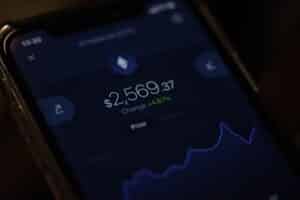Crypto fees in 2025: Legit cost or hidden trap?
Are crypto fees the new scam in 2025?
Does that platform actually charge you nothing to trade on it? So why do you have such low-profit margins? Are you making bad trades? Once in a while, sure, but always? Impossible. What is likely happening behind the scenes is that you are unknowingly paying crypto fees through your profits. Read on to find out all the hidden costs that could be draining your profits. Read the KuCoin review for a real-life example of a fee breakdown.
How much are you really paying to trade crypto?

Photo by Kanchanara on Unsplash
If a platform claims to charge next to nothing to trade, then you should be taking home all your money. If there are any charges, then they should have already been disclosed.
The fees that you are aware of are known as ‘visible fees.’ But this is not the only cost associated with a trade; hidden costs are less obvious. For example, you make a $500 profit on a BTC/USDT trade. If you think that means you withdraw the $500, think again. Before you can access this fund:
- $10 covers trading fees
- If the market was volatile at the time of your trade, then you could part with another $25 through slippage.
- If the difference between buying and selling prices is $20, you cover that difference through spread costs.
- Finally, to withdraw your profit, the platform decides to silently charge you another $15 as their markup.
- If you decide to convert your crypto to a fiat currency, that may cost between 1-2%, thus another $10.
Your $500 profit is now $420 in cash. Now imagine profits in thousands and more, losing $80 for every $500 profit. The losses accumulate very fast. So if you’re looking to make a bank through crypto trades, you have to become smarter to avoid this and other scams.
The smart trader’s fee checklist
As you can tell, some exchanges are doing a good job of disguising themselves as genuine platforms. You, however, can do better, ensuring you do not become their prey by using this checklist.
Transparent fee structure
If you cannot confidently say you know exactly what you’re paying, then you need to take a step back and evaluate if that platform has been truly transparent about its fees with you. A typical fee structure on a trustworthy trading platform should be readily available or easily accessible on the platform and explicitly display fees such as:
- Trading fees: the cost of facilitating a transaction usually represented as a percentage.
- Deposit fees: the cost of topping up your account, which is mostly not charged, but should be indicated as free nonetheless.
- Withdrawal fees: the cost to move crypto to your wallet and then convert it to fiat currency. These fees can be fixed costs already on the crypto asset.
Realistic trading commissions
If an exchange claims to charge zero fees or zero commission, run! Would you run a business and charge nothing for your services? Of course not. So, how do these exchanges cover their costs? This information is in fine print, and you may miss it. Platforms that make this 0% fee claim tend to require users to maintain high trading volumes, such as at least $100,000/month, to access this incentive.
Of course, not all zero-fee platforms are scammers. But they should clearly mention how they make a profit then, so their users can understand what stands behind the project.
Fair withdrawal charges

Photo by Brian J. Tromp on Unsplash
Trading crypto is made possible by users who complete housekeeping tasks such as validating and recording transactions. Transaction fees contribute to the network fees blockchains use to compensate these users. While this is expected, some platforms inflate network fees and add their markup, increasing withdrawal costs. While it is difficult to establish the exact network fees you should be charged, there are red flags you can look out for:
- Restrictive conditions to withdraw, e.g., having to upgrade to a certain account level.
- Increase in final transaction costs without clarification on new charges or blanket label of service fee.
No surprise conversion fees
A genuine exchange should convert using live markets. If the platform you’re currently using does not do so, then they are probably charging you a hidden markup. That 1-2% that you have accepted as ‘conversion loss’ is most likely the result of a hidden fee.
If you are using a credible exchange, then you should get exactly what is on the live market when you convert your crypto.
The hidden feature traps
Here are key terms to look for in your statement that refer to charges that you cover.
Slippage and Spread Games

Photo by Nick Chong on Unsplash
When you initiate a trade, there is an expected price. However, the price that matters is the one at which the trade is executed. This difference is called slippage, and it could be caused by low liquidity or fast market movement.
However, it can also be because the platform is applying a markup. Pair this up with a widespread, and you will have a lethal combination of high trading costs. That ‘0 fee’ trade you were promised becomes irrelevant as you must cover these costs. The results may even leave you with less funds than you came in with.
Minimum balance and inactivity fees
Often, shady exchanges do not disclose that they will charge you for not making trades on your account for a certain period. Additionally, they will fail to mention that you must maintain a specific minimum balance.
You will discover you have fallen into this trap when you check your balance and the math doesn’t add up. Only after inquiring will you be informed that you have accrued penalties for not trading or for having less than the minimum balance.
Fee tires
Yes, the platform says it charges zero fees or has a ridiculously low figure. But guess what? This claim may not apply to you if you’re not making trades in the hundreds of thousands per month. Your trades will most likely be cost-based on the tire volume they fall under.
The tired fees system is usually based on a 30-day trading volume. This means that the more you trade, the lower your trading fees. However, as this was not communicated upfront, it is not a strategy most will consider.
How to protect yourself from hidden crypto fees
Evidently, in crypto trading, the promise of cheap could end up being very expensive. So, before you engage with a platform with flashy claims of minimal fees:
- Read the fine print in the terms and conditions.
- Ensure access to the full free return of charges.
- Confirm that the promised fees are not tied to specific trading volumes.
If it sounds unrealistic, then avoid this service. Crypto trading is not charity; it is business. A genuine platform is upfront and transparent with its fees and features. Such platforms understand that your success is their success, so the goal is to ensure you can keep every dollar you earn.

